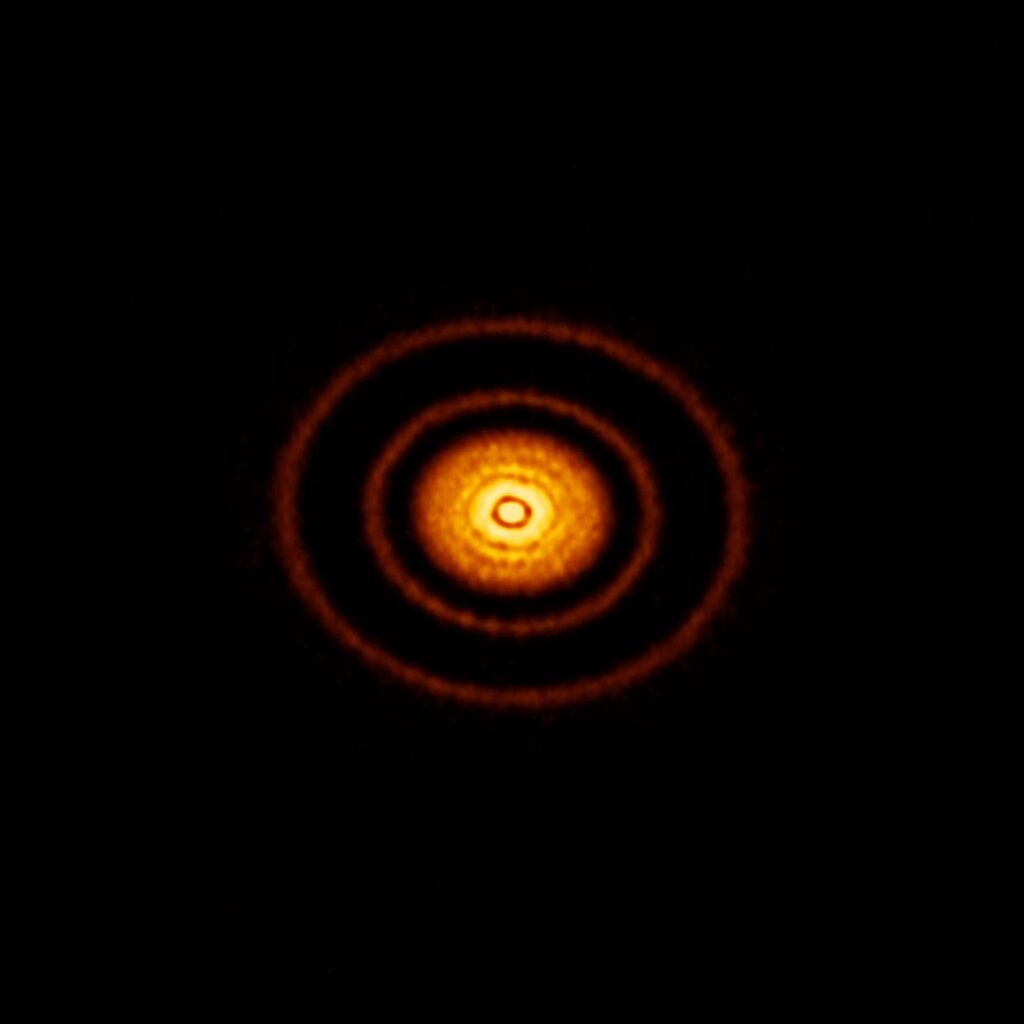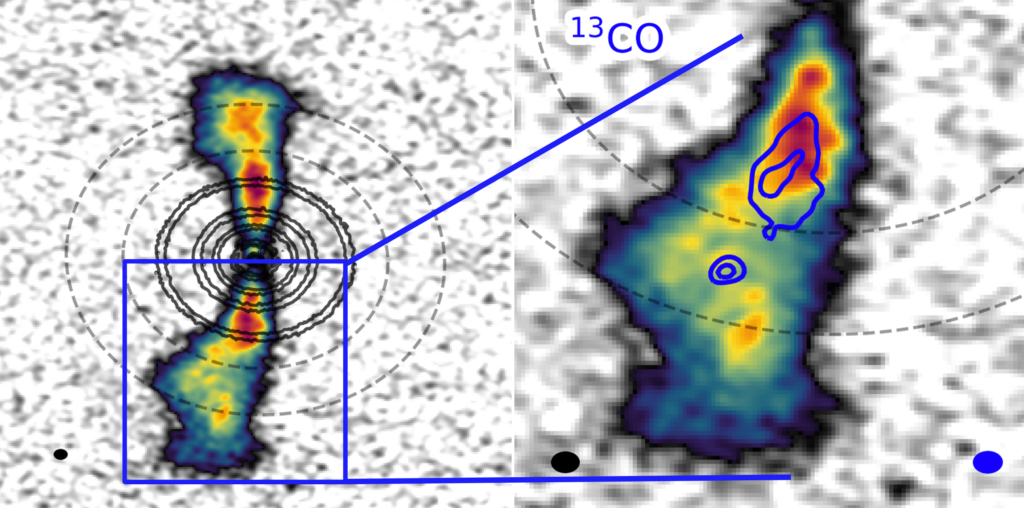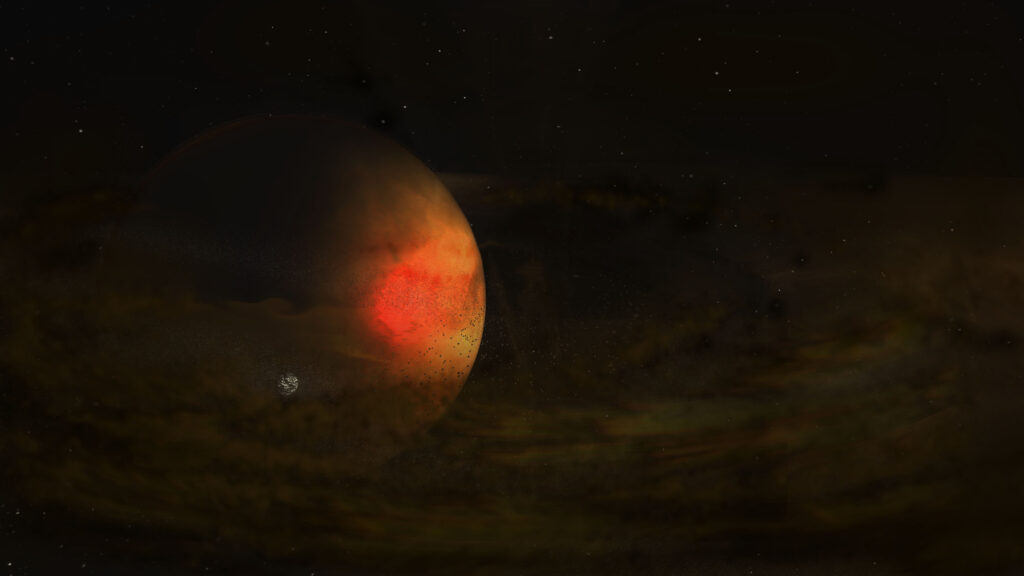Using the capabilities of the ALMA radio telescope complex, astronomers have discovered a young gas giant surrounded by a near-planetary disk. Subsequently, exomoons can form from it.
Forming Gas Giant
The discovery was made during the study of the AS 209 system, located at a distance of 395 light-years from Earth, in the direction of the constellation Ophiuchus. It is very young — its age is estimated at 1.6 million years. The star is still surrounded by a protoplanetary disk. Thanks to the good location (we see the system almost “flat”) and the relative proximity to the Earth, it is the object of increased attention from astronomers.

ALMA has repeatedly photographed the protoplanetary disk AS 209. Characteristic breaks were found in it, indicating the presence of forming exoplanets. During the new observations, ALMA was able to record a burst of light in the center of one of these gaps. It corresponds to the circumplanetary disk surrounding a gas giant with the mass of Jupiter. Its orbit passes at a distance of over 200 AU (30 billion km) from the center of the system.
Near-planetary disk
A near-planetary disk is a ring-shaped structure of accumulated gas, cosmic dust, planetesimals, asteroids or other fragments of material surrounding the planet. Satellites can subsequently be formed from this material. In particular, according to astronomers, the four largest moons of Jupiter (Io, Europa, Ganymede, Callisto) were formed just from the matter that once surrounded the gas giant of the near-planetary disk.

The discovery of a near-planetary disk in AS 209 is an important find. To date, this is only the third star system in which traces of such a structure have been found. Astronomers believe that studying it will help them shed light on how the formation of our Solar System took place 4.5 billion years ago.

The researchers also hope to solve the mystery of the exoplanet itself. It is located at a very considerable distance from the star, where, according to modern ideas, there should not be enough material to support such large bodies. According to one version, initially the exoplanet could have formed closer to the star and later migrated to the current orbit. The researchers hope that future observations using the James Webb Telescope will help solve the mystery of this object.
According to https://public.nrao.edu
Follow us on Twitter to get the most interesting space news in time
https://twitter.com/ust_magazine

